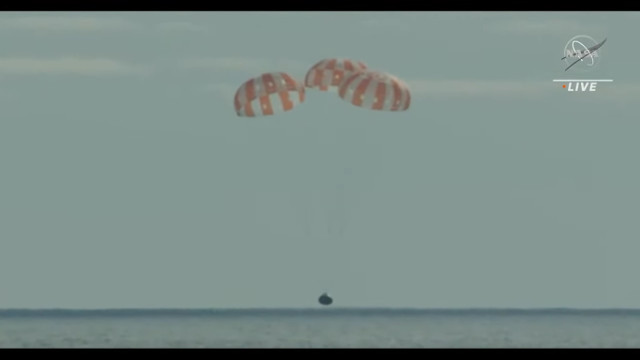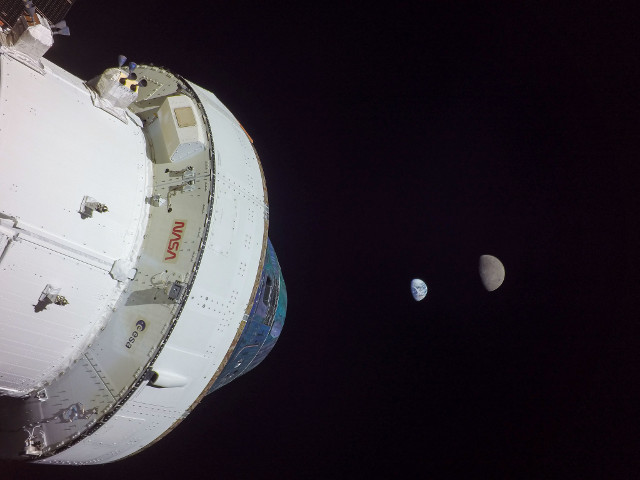
A little while ago, NASA’s Orion spacecraft completed its Artemis I mission by splashing down (Image NASA TV) off the coast of the Baja California Peninsula, near Guadalupe Island. It blasted off on November 16 on the new SLS (Space Launch System), also NASA’s. Various ships were in the area to recover the Orion and every piece of hardware that can be recovered, such as the parachutes of the landing system, in order to collect as much data as possible on a critical phase such as the return to Earth.
The Artemis I mission was long and complex, as the Orion spacecraft performed various orbits around the Moon which required several maneuvers to then return to Earth. It was a test mission for onboard systems, so there was no crew and all the maneuvers took place automatically. From the mission control center, it was possible to activate one of the programs but the distance made it impossible to drive the Orion in real-time.
Returning to Earth from the Moon’s orbit is more complex than returning from Earth’s orbit because of the far greater initial speed. In the case of the Orion spacecraft, the crew module separated from the ESA-supplied service module before starting re-entry. At that point, the capsule conducted the first maneuver that caused it to bounce off the upper atmosphere. It’s a technique used for the first time that allows a re-entry with an acceleration lower than that of the Apollo mission capsules, increasing safety. After the Orion entered the atmosphere for the second time, there was a descent towards the Pacific Ocean with the progressive deployment of 11 parachutes which slowed it down.
Over the course of the Artemis I mission, the comments about the various stages of the Orion spacecraft’s journey that came from NASA were positive. However, now there will be a long phase of in-depth analysis of the data collected by the instruments of the Orion spacecraft and the sensors present on the mannequins that simulated the presence of a crew. Only if the results are satisfactory will it be possible to proceed with the Artemis II mission, which will have four astronauts on board the Orion. At the moment, the plan is to perform a trip similar to the one just completed which could take place in 2024.


